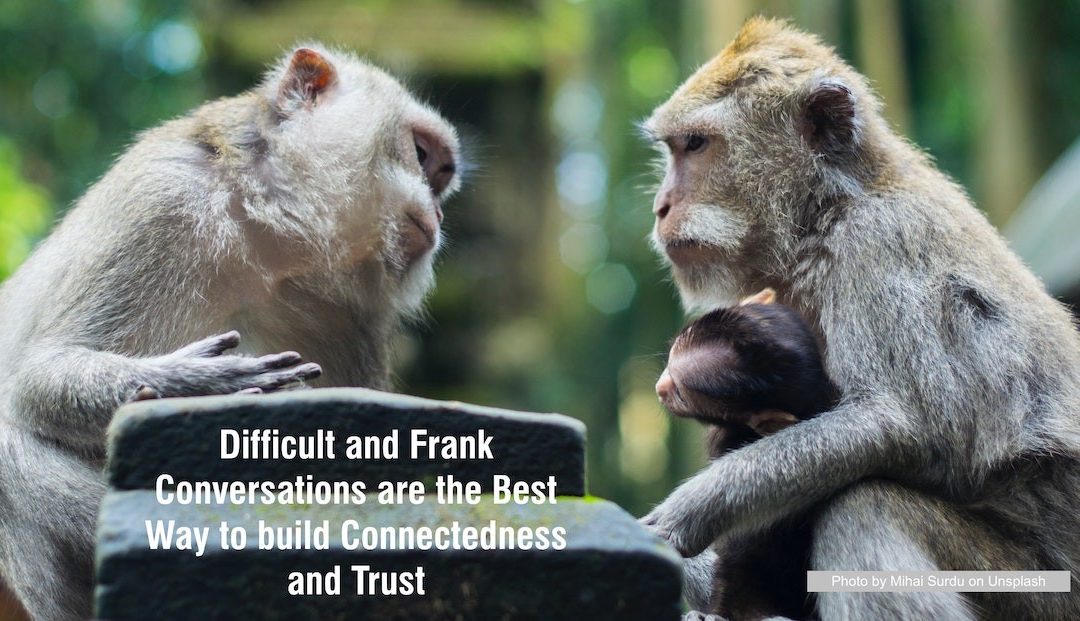The way we work is changing fast. People feel more distant from each other and leaders are overwhelmed.
The way to overcome separation and reduce overwhelm is to empower teams. Increase autonomy, foster transparency and promote inclusion. One path towards this new culture is a process to create team agreements..
By Stephan Dohrn,
Partner at Radical Inclusion
We are in the middle of a work revolution!
In the last few months, I have been talking with a lot of leaders about the changes they are dealing with.
The challenges I am hearing about all fall into one of 2 buckets:
One is that people feel more distant from one another. Leaders, employees, and colleagues feel the distance and they are having trouble overcoming it. They are having trouble creating a we-feeling, they are having trouble creating the connected need and intimacy needed to build trust in this virtual setting, in this context where all communication is mediated by screens.
The second thing is that leaders are overwhelmed – and interestingly it is a point that people not only talk about but I could also observe because it has been difficult to schedule time with many of the leaders I talked to.
There is a sense of “I have to know all the answers!” “I have to solve everything, decide everything”. On top of the pressure, they already felt before the pandemic they now also have to have (or at least they think so) all the answers about how to organize work, how many days people should see each other in the office etc.
Paradoxically the tools that enable virtual work, also make possible processes and structures of distributed leadership, of Self-organization.
And yet, what we are seeing is that more and more leaders are overwhelmed.
So, what can we do to create more connectedness and reduce overwhelm in a context that is becoming even more complex now that most of us will spend part of our time in the office and part at home?
Let me talk about what you can do to reduce overwhelm first.
Having worked with remote and distributed teams for over a decade, I think there are 2 main areas of work for leaders:
Team Agreements
First, create agreements with your team so everyone knows what is expected in different situations. There are 4 areas that I and my colleagues in Radical Inclusion have found to be of particular importance to make agreements around
- How work is organized which includes how you as a team use the different tools you have,
- How decisions are made and who needs to be involved in what (that is the area where you have to let go of control to empower your team to make the decisions, but it is also where you can free up a lot of your time and reduce that pressure),
- Availability – This is about creating a rhythm in your team, so you know when and how can I reach your colleagues – especially when you depend on their input to make a decision or to move a project forward. And, finally,
- Learning – How do we support each other and learn as a team.
Collaboration has to happen also between meetings
The second area, that I find to be a big lever to improve collaboration in remote and hybrid teams is asynchronous work. The better teams get at coordinating and co-creating with having to meet in real time, the more efficient they get. 2 really nice side effects: you start to reduce the meeting load and become more transparent in the process.
What about reducing the distance? How do we create deeper connections, and develop trust?
The answer is not to hold more calls and meetings, do social hours, have coffee chats, and play games. Do not get me wrong, informal social activities do help, but they alone will not create the type of connection we can build successful team cultures on.
The leaders that are most successful at building successful cultures are the ones who do not shy away from difficult conversations, who name the white elephants in the room, and who are comfortable and good at constructive conflict. There is nothing that connects more than to haggle out a disagreement and come up with a joint solution on the other end. Not only does that build and deepen connection it also reinforces a culture that fosters inclusivity and promotes psychological safety – both very much connected with higher levels of engagement, innovation, and productivity.

